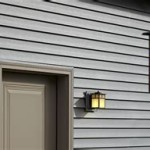How to Make an Outdoor Gazebo
Constructing an outdoor gazebo provides a dedicated space for relaxation, entertainment, and protection from the elements. A well-built gazebo can significantly enhance the aesthetic appeal of a property while also adding functional value. This article outlines the process of building a gazebo, providing detailed instructions and considerations to ensure a successful project.
Before initiating the construction process, careful planning is crucial. This involves determining the desired size, shape, and location of the gazebo. Local building codes and regulations should be consulted to ensure compliance. A comprehensive plan will streamline the build and minimize potential complications.
The choice of materials is also paramount. Wood is a popular option due to its natural aesthetic and ease of workability. Pressure-treated lumber is recommended for ground contact to resist rot and insect infestation. Alternative materials such as vinyl and metal offer increased durability and reduced maintenance, but may require specialized tools and skills.
Safety should be a primary concern throughout the entire construction process. Appropriate personal protective equipment (PPE) such as safety glasses, gloves, and hearing protection should be worn at all times. It is also essential to use power tools safely and follow manufacturer's instructions. Enlisting the assistance of a qualified professional may be beneficial, especially for complex aspects of the project.
I. Planning and Preparation
The initial stage of gazebo construction involves meticulous planning and preparation. This encompasses several critical steps that lay the foundation for a successful build.
First, the intended location of the gazebo must be carefully evaluated. Consider factors such as sunlight exposure, proximity to existing structures, and ground conditions. Ideally, the location should be relatively level and well-drained. Avoid areas prone to flooding or water accumulation.
Next, determine the desired size and shape of the gazebo. Common shapes include round, square, hexagonal, and octagonal. The size should be proportionate to the surrounding landscape and accommodate the intended use of the space. Consider the placement of furniture and the number of people the gazebo will typically accommodate.
With the location and dimensions finalized, create a detailed plan or obtain a pre-designed gazebo plan. The plan should include detailed drawings, material lists, and step-by-step instructions. Ensure the plan is accurate and comprehensive to avoid confusion during the construction process.
Acquire the necessary building permits from the local authorities. Research local building codes and regulations to ensure the gazebo adheres to all requirements. Failure to obtain the necessary permits can result in fines or necessitate the removal of the structure.
Finally, gather all the necessary materials and tools. This includes lumber, fasteners, concrete, and various power tools such as saws, drills, and levels. Organize the materials and tools in a convenient location to facilitate the construction process.
II. Foundation and Framing
The foundation provides a stable base for the gazebo, ensuring its longevity and structural integrity. The type of foundation will depend on the size and design of the gazebo, as well as the soil conditions.
A common foundation option is concrete piers. To install concrete piers, dig holes at the designated locations according to the plan. The depth of the holes should extend below the frost line to prevent heaving due to freezing temperatures. Fill the holes with concrete, ensuring the piers are level and flush with the ground. Embed metal brackets or post anchors into the concrete while it is still wet to provide a secure attachment point for the gazebo posts.
Another foundation option is a concrete slab. This provides a solid and level surface for the gazebo. To construct a concrete slab, prepare the site by removing any vegetation and topsoil. Install a gravel base to improve drainage and prevent cracking. Pour concrete over the gravel base and level it with a screed. Allow the concrete to cure for several days before proceeding with the framing.
Once the foundation is in place, begin constructing the frame. Start by attaching the posts to the metal brackets or post anchors embedded in the concrete piers or slab. Ensure the posts are plumb and level using a level. Secure the posts with screws or bolts.
Next, install the beams that will support the roof. The beams should be securely attached to the posts using appropriate fasteners. Ensure the beams are level and properly aligned. Add cross bracing between the posts to increase the stability of the frame.
Finally, construct the floor frame, if applicable. The floor frame should be built from pressure-treated lumber and securely attached to the posts. Install the floor joists and subfloor to create a solid and level floor surface.
III. Roof Construction and Finishing Touches
The roof is a critical component of the gazebo, providing protection from the elements and contributing to its overall aesthetic appeal. Constructing the roof requires careful planning and execution.
The first step is to build the roof frame. This typically involves constructing a series of rafters that radiate from a central point. The rafters should be cut to the correct length and angle to achieve the desired roof pitch. Securely attach the rafters to the beams using appropriate fasteners.
Next, install the roof sheathing. The roof sheathing provides a solid surface for the roofing material. Plywood or oriented strand board (OSB) are commonly used for roof sheathing. Cut the sheathing to the appropriate size and shape and attach it to the rafters using nails or screws.
Once the sheathing is in place, install the roofing material. Common roofing materials include shingles, metal roofing, and wood shakes. Follow the manufacturer's instructions for installing the roofing material. Ensure the roofing material is properly sealed to prevent leaks.
With the roof complete, begin adding the finishing touches. This includes installing railings, trim, and other decorative elements. Railings provide safety and enhance the aesthetic appeal of the gazebo. Trim can be used to cover exposed edges and create a more finished look.
Consider adding electrical wiring for lighting and outlets. If installing electrical wiring, consult with a qualified electrician to ensure the work is done safely and in compliance with local codes. Install light fixtures and outlets at convenient locations within the gazebo.
Finally, apply a sealant or stain to the wood to protect it from the elements. Choose a sealant or stain that is appropriate for the type of wood used and the climate. Apply the sealant or stain according to the manufacturer's instructions.
Building a gazebo is a challenging but rewarding project. By following these steps and taking the necessary precautions, people can create a beautiful and functional outdoor space that will be enjoyed for years to come. Remember to consult with local building codes and regulations, and seek professional assistance if needed.
Maintenance is essential for preserving the gazebo's integrity and appearance. Regular cleaning, inspection, and repair should be undertaken to prevent the structure from damage.
By understanding the process and undertaking the work with due care, a gazebo becomes a valuable addition to any property.

How To Build Your Own Wooden Gazebo 10 Amazing Projects

Build A Diy Patio Gazebo From Kit And Save Big Money Girl Just

You Can Build This Gazebo Yardistry

13 Stunning Gazebo Ideas For A Relaxing Backyard Retreat Bob Vila

22 Free Diy Gazebo Plans Ideas To Build With Step By Tutorials Backyard

9 Backyard Gazebo Ideas For The Summer

Diy Backyard Gazebo 19 Steps With Pictures Instructables

10 Gazebo Kits You Can Buy And Build Yourself Bob Vila

How To Build A Gazebo The Home Depot

Build A Simple Gazebo Outdoor Rooms Backyard
Related Posts







